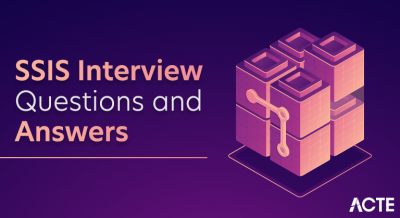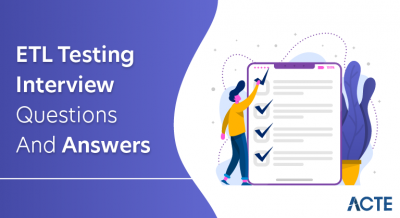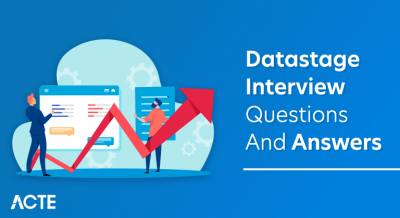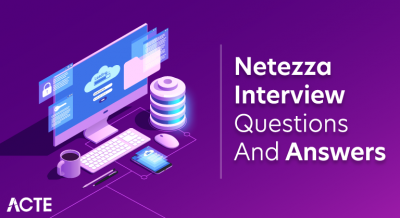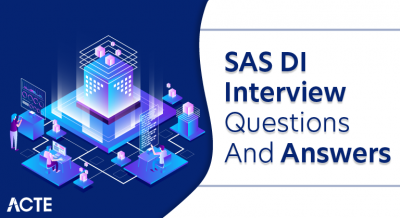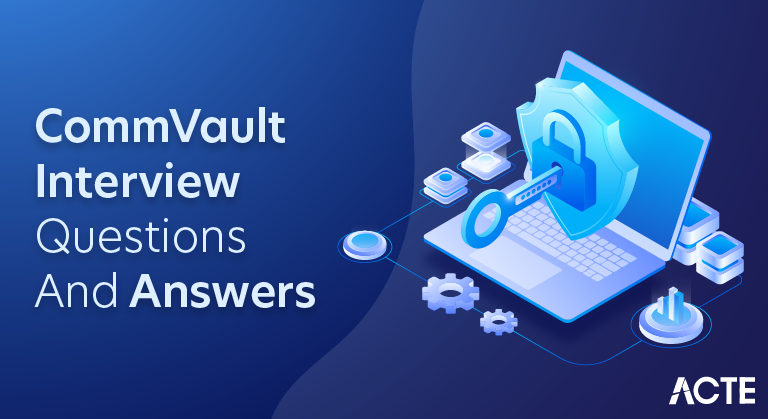
The following interview questions are crafted to familiarize you with the types of queries you might face in a CommVault interview. In my experience, adept interviewers often initiate discussions with fundamental concepts, progressing based on the candidate’s responses. This compilation includes the top CommVault interview questions, complete with detailed answers. It spans scenario-based inquiries, questions suitable for entry-level candidates, and those tailored for experienced individuals in the field of CommVault. It’s important to note that interviews may not adhere strictly to a predetermined question-answer format, with discussions evolving based on the candidate’s knowledge and responses.
1. What is Commvault, and what does it specialize in?
Ans:
Commvault is a major data management and protection software firm that specialises in complete data backup, recovery, and management solutions. Its scope includes data governance, compliance, and intelligent data management in a variety of situations.
2. Explain Commvault ensure data security and compliance?
Ans:
- Commvault employs robust security measures such as encryption, access controls, and compliance reporting to safeguard data.
- It helps organizations adhere to regulatory requirements by ensuring data integrity and protecting sensitive information.
3. What is Commvault’s role in data backup and recovery?
Ans:
- Backup and Recovery Software
- Data Management
- Multi-Cloud Support
- Disaster Recovery
- Comprehensive Coverage
- Automation and Orchestration
Commvault provides a single data management platform that makes backup and recovery easier. It enables centralised data management across several applications, platforms, and locations, enabling rapid and effective data recovery.
4. Explain Commvault’s stance on cloud integration?
Ans:
- Commvault has a strong and strategic focus on cloud integration, recognising the rising relevance of cloud services in modern IT systems.
- The firm is dedicated to offering complete solutions that effortlessly interact with numerous cloud platforms, allowing organisations to reap the benefits of cloud storage, scalability, and flexibility.
- Their products let customers to easily manage, preserve, and restore data across on-premises and cloud settings.
5. How will Commvault tackle challenges in hybrid IT environments?
Ans:
- Commvault has a deliberate and robust emphasis on cloud integration, acknowledging the increasing significance of cloud services in contemporary IT settings.
- In order to enable enterprises to take advantage of cloud storage, scalability, and flexibility, the firm is dedicated to offering complete solutions that interface with different cloud platforms in an easy and smooth manner.
- In terms of cloud integration, Commvault stands by providing strong support for key cloud providers including Google Cloud Platform, Microsoft Azure, and AWS.
6. Explain features of Commvault’s data management?
Ans:
Commvault’s platform offers features such as deduplication, snapshot management, archiving, and disaster recovery. It also includes analytics for data insights, making it a comprehensive solution for organizations with diverse data management needs.
7. How does Commvault support organizations in data governance?
Ans:
Commvault facilitates effective data governance by providing tools for policy enforcement, data classification, and metadata management. It helps organizations maintain control and visibility over their data assets.
Policy-Based Management: Commvault allows organizations to define and enforce data management policies. These policies govern how data is backed up, retained, and archived. This ensures consistency in data handling, reducing the risk of data breaches or compliance violations.
Data Classification and Tagging: Commvault provides tools for data classification and tagging, enabling organizations to categorize their data based on sensitivity, compliance requirements, or other criteria. This helps in implementing specific governance policies for different types of data.
Access Controls and Encryption: To enhance data security and governance, Commvault offers access controls and encryption features.
8. Explain Commvault’s role in eDiscovery processes?
Ans:
Commvault assists organizations in eDiscovery by enabling efficient search and retrieval of relevant data. Its capabilities help legal and compliance teams respond to litigation or regulatory requests effectively.
9. Explain Commvault reducing data management costs?
Ans:
Commvault helps reduce costs through its data deduplication and compression capabilities, optimizing storage usage. Additionally, its centralized management approach minimizes administrative overhead and enhances operational efficiency.
10. How to handle different applications and databases?
Ans:
Commvault supports a wide range of applications and databases, offering consistent data management regardless of the underlying technology. This ensures a unified approach to handling diverse data sources.
11. Explain Commvault’s approach to disaster recovery?
Ans:
Commvault provides a robust disaster recovery solution, allowing organizations to quickly recover data and applications in the event of a disaster. This includes features like replication, failover, and automated recovery processes.
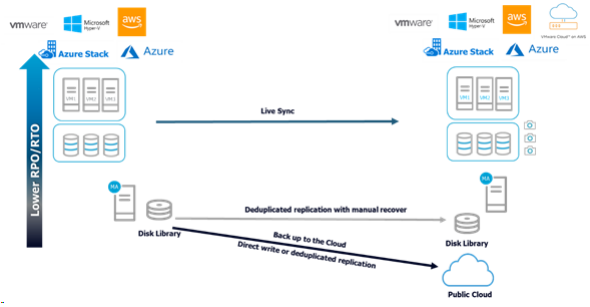
12. What does the Pace with evolving technology trends?
Ans:
Commvault is committed to innovation and regularly updates its platform to align with emerging technology trends. It ensures compatibility with the latest infrastructure, applications, and industry standards.
13. How to Support for virtualized environments?
Ans:
Commvault offers comprehensive support for virtualized environments, allowing organizations to manage and protect data in virtual machines efficiently. This includes features like VM-level backup and recovery.
14. What about Organizations in achieving data mobility?
Ans:
- Commvault plays a crucial role in helping organizations achieve data mobility, facilitating the seamless movement of data across different environments while maintaining accessibility, security, and integrity.
- With the increasing complexity of IT infrastructures, including on-premises data centers and various cloud platforms, achieving data mobility is essential for optimizing resource utilization and supporting dynamic business requirements.
15. Differentiate between machine learning and deep learning.
Ans:
| Feature | Machine Learning | Deep Learning | |
| Definition |
Subset of AI focusing on models for learning from data. |
Specialized ML using deep neural networks. | |
| Data Dependency | Relies on feature engineering for data understanding. | Learns hierarchical features, reducing need for manual extraction. | |
| Model Complexity | Involves simpler models like decision trees or SVMs. | Utilizes complex deep neural network architectures. | |
| Example Algorithms |
Decision Trees, SVMs, k-Nearest Neighbors. |
CNNs, RNNs, LSTMs, Transformers. |
16. Explain the scalability requirements of large enterprises?
Ans:
Commvault’s platform is designed to scale with the growing data needs of large enterprises. It offers the flexibility to expand storage and processing capabilities as the organization’s requirements evolve.
Data Volume Growth: Large enterprises generate and accumulate vast amounts of data. Scalability is essential to accommodate the increasing volume of data generated by various business processes, applications, and transactions.
User Base Expansion: As enterprises grow, the number of users accessing IT systems and applications also increases. Scalability is crucial to ensure that the infrastructure can handle concurrent user access without degrading performance.
Application Complexity: Large enterprises often rely on complex and resource-intensive applications to support their business functions. Scalability requirements involve the ability of the infrastructure to support these applications, ensuring they can scale horizontally or vertically as needed.
17. How to handle the complexities of managing data in a multi-cloud environment?
Ans:
Commvault simplifies data management in multi-cloud environments by providing a unified control center. Organizations can manage, protect, and optimize their data across different cloud platforms seamlessly.
18. Differentiate Data analytics and insights.
Ans:
Commvault prioritizes data accessibility and availability through features like automated backup schedules, real-time monitoring, and quick recovery processes. This ensures that critical data is readily accessible when needed.
19. What does support and training provide its users?
Ans:
Commvault offers comprehensive support and training programs to help users maximize the benefits of its platform. This includes documentation, online resources, and personalized training sessions, ensuring users can effectively leverage Commvault’s capabilities.
20. What are the Primary focuses of Commvault’s data management solutions?
Ans:
- Data Backup and Recovery
- Data Lifecycle Management
- Multi-Cloud Data Management
- Data Security and Compliance
Commvault specializes in providing advanced data management solutions, offering comprehensive tools for data backup, recovery, and intelligent management across various environments.
21. What are the challenges of data protection in modern IT landscapes?
Ans:
- Data protection in contemporary IT environments confronts a number of difficulties.
- There are substantial hazards because of the growing volume and complexity of data as well as the increase in cyberthreats.
- In order to maintain business continuity in the case of data loss or system failures, organisations must deal with the requirement for reliable backup and recovery solutions.
- Data protection policies become more difficult due to the dynamic nature of IT systems, which includes the use of cloud services and the proliferation of endpoints.
22. What is the Commvault’s role in ensuring data security?
Ans:
- Commvault plays a crucial role in ensuring data security through its comprehensive data management solutions.
- The company incorporates robust security features to safeguard sensitive information.
- This includes access controls, encryption mechanisms for data in transit and at rest, and compliance reporting to help organizations adhere to regulatory requirements.
- Commvault’s solutions are designed to provide a secure environment for backup, recovery, and data management processes.
23. What are the ways to support organizations with hybrid IT infrastructures?
Ans:
- Commvault provides many support options to enterprises with hybrid IT infrastructures, catering to the particular difficulties associated with data management in heterogeneous settings.
- A holistic approach to data management is made possible by the company’s facilitation of seamless integration between cloud-based and on-premises systems.
- With Commvault’s multi-cloud interoperability, enterprises can effectively manage and safeguard data on several cloud platforms.
24. Explain the features that make the data management platform stand out.
Ans:
- Comprehensive Data Backup and Recovery
- Multi-Cloud Support
- Data Lifecycle Management
- Unified Management Console
- Automation and Orchestration
- Scalability
Commvault’s platform stands out with features like deduplication, archiving, and disaster recovery capabilities, making it a comprehensive solution for organizations with diverse data management needs.
25. Explain about reducing data management costs for businesses?
Ans:
- Reducing data management costs for businesses is a critical goal, and it involves implementing strategies and utilizing tools that optimize the use of resources.
- Employing data deduplication and compression techniques helps minimize storage requirements, lowering associated costs.
- Cloud adoption can provide cost-effective storage solutions, allowing businesses to scale their storage needs without heavy upfront investments in infrastructure.
26. How does supporting organizations’ compliance efforts?
Ans:
- Supporting organizations’ compliance efforts is a crucial aspect of a robust data management platform.
- Such a platform helps businesses adhere to regulatory requirements by implementing features like access controls, encryption, and secure data storage practices.
- It enables organizations to classify and tag data based on sensitivity, facilitating compliance with data protection laws.
- Comprehensive audit trails and reporting functionalities provide transparency into data handling processes, aiding organizations in demonstrating compliance to regulatory bodies.
27. How is Commvault’s approach to eDiscovery processes?
Ans:
- Commvault’s approach to eDiscovery processes is characterized by its comprehensive data management capabilities.
- The platform provides tools to efficiently locate, secure, and retrieve relevant electronic information for legal purposes.
- Commvault supports the identification and collection of electronically stored information (ESI) across diverse data sources, including emails, files, and databases.
28. How to Adapt emerging technology trends in the IT landscape?
Ans:
- Adapting to emerging technology trends in the IT landscape involves a proactive and strategic approach. Organizations should prioritize continuous learning and stay informed about the latest technological developments.
- Establishing a culture of innovation and experimentation allows for the exploration of new technologies.
- Collaborating with industry peers, attending conferences, and engaging with technology communities can provide valuable insights.
29. Explain about Businesses in achieving data mobility?
Ans:
- Businesses achieve data mobility by adopting strategies and technologies that facilitate the seamless movement of data across different platforms and environments.
- This involves leveraging solutions that support interoperability between on-premises infrastructure and various cloud services.
- Data mobility enables organizations to efficiently transfer, access, and utilize their data where and when it’s needed.
- It enhances flexibility, allowing businesses to adapt to changing requirements and take advantage of the scalability and resources offered by different technological landscapes.
30. What are the specific support offered for virtualized environments?
Ans:
- Commvault offers robust support for virtualized environments through its comprehensive data management solutions.
- The platform provides features such as virtual machine (VM) backup and recovery, ensuring the protection of critical data in virtualized infrastructures.
- Commvault’s support extends to various virtualization platforms, including VMware and Microsoft Hyper-V.
- The platform leverages snapshot technology for efficient and rapid backups while minimizing impact on production environments.
31. How does Commvault contribute to the modernization of IT infrastructure?
Ans:
- Commvault contributes significantly to the modernization of IT infrastructure by providing comprehensive data management solutions.
- The platform supports organizations in their digital transformation efforts by offering seamless integration with modern technologies such as cloud computing and virtualization.
- Commvault’s multi-cloud support enables businesses to optimize resource utilization and enhance scalability.
32. What does the Commvault address the scalability requirements of large enterprises?
Ans:
- Commvault effectively addresses the scalability requirements of large enterprises through its versatile data management solutions.
- The platform is designed to seamlessly scale horizontally and vertically, accommodating the growing volume of data and the dynamic needs of expansive organizations.
- Commvault’s scalability is evident in its ability to support diverse workloads, applications, and databases, ensuring optimal performance even as demands increase.
33. Simplify the data management in multi-cloud environments?
Ans:
- Commvault simplifies data management in multi-cloud environments by providing a unified and comprehensive solution.
- The platform offers a centralized management console that allows organizations to efficiently oversee and control data across diverse cloud platforms.
- Commvault’s support for major cloud providers, such as AWS, Azure, and Google Cloud, ensures compatibility and seamless integration.
34. Explain about integrating data analytics into its platform?
Ans:
- Commvault integrates data analytics into its platform to provide organizations with valuable insights and intelligence from their data.
- By incorporating analytics capabilities, Commvault allows users to derive meaningful information, trends, and patterns from their stored data.
- This integration enhances decision-making processes and enables businesses to leverage their data for strategic purposes.
35. How to Ensure the accessibility and availability of critical data?
Ans:
- Ensuring the accessibility and availability of critical data involves implementing robust data management practices.
- Utilizing a reliable backup and recovery solution, such as Commvault, enables organizations to regularly and securely back up their critical data.
- By leveraging automation and scheduling features, organizations can ensure consistent and timely backups.
- Implementing a comprehensive disaster recovery plan further enhances data availability, allowing for quick restoration in case of system failures or unforeseen events.
36. Explain the support and training programs?
Ans:
- Commvault offers comprehensive support and training programs to ensure organizations can maximize the benefits of their data management solutions.
- The support programs typically include access to a dedicated support team, regular software updates, and assistance in issue resolution.
- Commvault’s training programs cater to users at various levels, providing in-depth knowledge of the platform’s features and functionalities.
- Training may include hands-on sessions, documentation, and online resources to empower users with the skills needed for effective data management.
37. Differentiate disaster recovery solution from others?
Ans:
- Commvault’s disaster recovery solution stands out through its comprehensive approach and features.
- It goes beyond simple data backup, offering robust recovery capabilities to minimize downtime in the event of a disaster.
- The platform provides automated disaster recovery orchestration, ensuring a systematic and efficient recovery process.
- Commvault’s support for diverse IT environments, including on-premises and multi-cloud setups, enhances adaptability.
- Its global deduplication and data compression techniques optimize storage requirements, reducing costs associated with disaster recovery.
38. Explain Compatibility with evolving technology standards?
Ans:
- Commvault stays abreast of industry changes to ensure compliance with changing technological standards.
- In order to enable organisations to embrace and utilise new tools and frameworks, the platform is made to smoothly connect with developing technologies and standards.
- With frequent updates and a dedication to interoperability, Commvault adapts to changing IT environments by supporting the newest cloud services, virtualization software, and storage systems.
39. Maintain data visibility and control for organizations?
Ans:
- Commvault maintains data visibility and control for organizations by providing a centralized and unified data management platform.
- The platform offers a comprehensive view of data across diverse environments, including on-premises infrastructure and various cloud platforms.
- Through features such as data classification, tagging, and access controls, Commvault ensures organizations have granular control over their data, mitigating risks and adhering to compliance requirements.
- Automation and orchestration further enhance data visibility by streamlining management tasks.
40. Differentiate between incremental and differential backups?
Ans:
- Differential backups store every change made since the last complete backup, whereas incremental backups merely store the material that has changed since the last backup.
- Although incrementals are quicker, restoration times may be longer.
- Differentials use more room but can be restored more quickly.
41. How to Handle data deduplication in a backup environment, and its benefits?
Ans:
- Handling data deduplication in a backup environment is crucial for optimizing storage efficiency.
- Commvault employs global deduplication techniques, identifying and eliminating redundant data across the entire backup environment rather than within individual datasets.
- This approach significantly reduces storage requirements by storing only unique data blocks.
- The benefits of data deduplication in a Commvault backup environment include reduced storage costs, minimized backup windows, and improved data transfer efficiency.
42. Explain the concept of snapshot-based backups.
Ans:
Snapshot-based backups capture the state of a system at a specific point in time. They provide a quick and efficient way to create backups, but they may consume considerable storage space and can impact performance during the snapshot creation.
43. What is Effective backup strategy for a diverse large enterprise?
Ans:
To begin, I would carefully examine the organization’s data environment and classify the data according to its criticality and change frequency. Then, using technologies like deduplication and compression to maximize capacity, I would create a mix of full, incremental, and differential backups.
44. How do you keep the business going if data is lost?
Ans:
In-depth disaster recovery plans with frequent testing, updated documentation, and unambiguous communication procedures are among the things I’ve helped create. Reduced downtime and data loss are the main objectives in the case of a disaster, with an emphasis on quick recovery and key system restoration.
45. What is blockchain technology?
Ans:
- Distributed ledger technology.
- Immutable, decentralized, and transparent.
- Used in cryptocurrencies like Bitcoin.
46. Explain the difference between TCP and UDP.
Ans:
- TCP (Transmission Control Protocol) is connection-oriented.
- UDP (User Datagram Protocol) is connectionless.
- TCP ensures reliability with acknowledgments, while
- UDP is faster but less reliable.
47. How does a CDN (Content Delivery Network) work?
Ans:
- Distributes content across multiple servers geographically.
- Improves website performance and user experience.
- Once the optimal server is selected, it delivers the cached content to the user.
48. What is the role play in supporting the modernization of IT infrastructure?
Ans:
Commvault contributes to IT modernization by providing a flexible and scalable data management platform. It allows organizations to transition to modern infrastructures, including cloud and hybrid environments, with ease.
49. Explain the CAP theorem in distributed systems.
Ans:
Consistency (C): Consistency ensures that all nodes in a distributed system have the same data at the same time. In a consistent system, when a write operation is performed, all subsequent read operations will reflect that write.
Availability (A): In a distributed system, availability ensures that each request is answered by a non-failing node, but it does not ensure that the response has the latest data. Even when there are node failures, an available system responds to client requests correctly.
Partition Tolerance (P): Partition tolerance deals with the system’s ability to function even when network partitions occur, meaning that communication between nodes is disrupted or delayed.
50. Explain the Purpose of an API (Application Programming Interface)?
Ans:
Integration: APIs enable different software systems to integrate and work together seamlessly. They serve as intermediaries, allowing applications to access each other’s features, data, or services without requiring the internal details of their implementations.
Modularity: APIs promote modularity in software design. By exposing specific functionalities or data through an API, developers can create modular and reusable components that can be easily incorporated into different applications.
Interoperability: APIs facilitate interoperability between different software platforms, languages, and technologies. They allow applications running on different systems to communicate effectively, fostering compatibility and collaboration.
Scalability: APIs contribute to scalability by enabling the integration of new functionalities or services without the need to overhaul existing systems. This modular approach supports incremental updates and enhancements.
51. Explain Virtualization’s contribution to IT infrastructure?
Ans:
Resource Optimization: Virtualization makes it possible to create virtual machines (VMs) or containers, which optimise the usage of actual hardware. This optimises resource utilisation and lowers hardware costs by allowing many operating systems and applications to operate on a single physical server.
Increased Flexibility and Agility: Virtualization provides the flexibility to allocate and reallocate computing resources dynamically. IT teams can quickly provision new VMs, adjust resource allocations, and scale infrastructure up or down based on demand, enhancing overall agility.
52. Explain the concept of microservices architecture.
Ans:
- Architectural style where applications are composed of small, independent services.
- Each service performs a specific business function.
- Promotes scalability, agility, and ease of maintenance.
53. Explain the key components of a data management platform.
Ans:
CommServe: Acts as the central management entity for configuration, job scheduling, and reporting.
MediaAgent: Manages data movement, storage, and retrieval operations.
Clients: Agents installed on servers or endpoints to facilitate data protection and management tasks.
Storage Policies: Define data retention, storage targets, and data movement rules.
54. What is Commvault space with data,what’s important for big setups?
Ans:
- Commvault employs source-side and target-side deduplication to optimize storage usage.
- In large-scale environments, factors like network bandwidth, storage I/O, and deduplication method (block-level or file-level) must be carefully considered.
- Efficient deduplication ensures minimized storage footprint and faster backup and recovery processes.
55. Explain Commvault’s disaster plan and Live Sync’s role?
Ans:
- Commvault emphasizes a comprehensive disaster recovery strategy, including backup, replication, and failover capabilities.
- Live Sync facilitates real-time replication of VMs for near-instantaneous recovery in case of a disaster.
- Integration with cloud platforms further enhances flexibility and redundancy in disaster recovery planning.
56. What are Commvault in the cloud: backup approach and transitioning challenges?
Ans:
- Commvault offers cloud-native backup solutions, supporting major cloud providers like AWS, Azure, and Google Cloud.
- Challenges may include data transfer costs, egress fees, and ensuring compatibility with diverse cloud infrastructures.
- Commvault’s cloud solutions aim to streamline data management in hybrid and multi-cloud scenarios.
57. Explain about Data privacy compliance and adapting to regulations?
Ans:
- Commvault provides features for data encryption, access controls, and audit trails to support compliance.
- With GDPR, CCPA, and other regulations, ongoing updates to Commvault’s software ensure alignment with evolving legal requirements.
- Regular training and awareness programs for users help maintain a culture of data privacy within organizations.
58. Explain CommServe, MediaAgent, IntelliSnap, Technology.
Ans:
- CommServe serves as the central hub for configuration, scheduling, and reporting in Commvault, while MediaAgent manages data movement, storage, and retrieval operations.
- CommServe orchestrates backup and recovery processes, and MediaAgent acts as an intermediary between clients and storage, optimizing data flow and efficiency.
- Commvault’s IntelliSnap technology is pivotal for snapshot-based data protection. It captures point-in-time copies of data, significantly reducing backup windows and minimizing the impact on production systems during backup operations.
- This technology enhances data protection and recovery efficiency.
59. Differentiate between Synthetic Full Backup and Large-Scale Database Backup.
Ans:
- Synthetic Full Backup is a feature in Commvault that consolidates incremental backups into a full backup image without transferring the actual data.
- This process enhances backup efficiency by reducing the need for time-consuming full backups, optimizing storage usage, and streamlining data protection workflows.
- Commvault addresses challenges associated with large-scale database backup through parallel processing, optimized workflows, and database-specific agents.
- These measures ensure resource-intensive operations do not adversely affect database performance while maintaining robust data protection.
60. Explain about Data Archiving.
Ans:
- Commvault supports data archiving by implementing policies that move less frequently accessed data to secondary storage.
- Considerations for implementing an archiving strategy include defining data retention policies.
- Managing storage costs and ensuring compliance with industry regulations.
61. Explain about Data Migration to Cloud.
Ans:
Commvault facilitates seamless data migration between on-premises and cloud environments by supporting various cloud providers. This provides organizations with flexibility in choosing the right cloud storage tier based on performance and cost considerations.
62. What are the Security in Multi-Tenant Environments?
Ans:
Commvault addresses security concerns in multi-tenant environments by implementing robust encryption, access controls, and auditing features. Multi-tenancy support ensures isolation between different organizations or departments sharing the same infrastructure, maintaining data integrity and confidentiality.
63. What is Ransomware Mitigation?
Ans:
Ransomware threats are mitigated by Commvault through features like air-gapped backups, anomaly detection, and rapid recovery. These measures minimize the impact of ransomware attacks, ensuring organizations can quickly recover critical data in the event of a security breach.
64. What is Software-Defined Storage Integration?
Ans:
Commvault integrates seamlessly with Software-Defined Storage (SDS) platforms, leveraging their flexibility and scalability. This integration optimizes storage utilization, simplifies management, and allows organizations to adapt to evolving storage infrastructures.
65. Explain VM Backup Optimization.
Ans:
Commvault supports optimized VM backups for major hypervisors through agentless backup solutions. These optimizations include parallel processing, Changed Block Tracking (CBT), and application-aware backups to ensure consistency and efficiency in virtualized environments.
66. Explain about Hybrid Cloud Management Challenges.
Ans:
Challenges associated with managing data in hybrid cloud environments, such as data movement and interoperability, are addressed by Commvault’s unified approach. This approach allows for seamless management, backup, and recovery across on-premises and cloud environments.
67. Explain about Data Mobility.
Ans:
Commvault emphasizes data mobility by supporting various storage platforms and cloud providers. Features like data tiering, replication, and migration facilitate seamless data movement, enabling organizations to adapt to changing storage requirements.
Q68. What is Data Management in Regulated Industries?
Ans:
In highly regulated industries, Commvault ensures compliance by implementing robust encryption, access controls, and audit capabilities. Regular audits, documentation, and training contribute to maintaining adherence to regulatory requirements.
Q69. Explain RPO and RTO in High-Availability Environments.
Ans:
- Commvault’s flexible scheduling and replication options allow organizations to define and meet specific Recovery Point Objectives (RPOs).
- Recovery Time Objectives (RTOs). Integration with technologies like Live Sync supports near-instantaneous recovery in high-availability environments.
70. Explain Data Indexing and Search Capabilities.
Ans:
Commvault’s indexing of metadata and content enables efficient search and retrieval of specific data, contributing to eDiscovery processes. The platform facilitates granular search capabilities and legal hold features for streamlined compliance with legal requirements.
71. Difference Balancing Data Accessibility and Storage Costs.
Ans:
Commvault assists organizations in balancing data accessibility and storage costs through policies that define data lifecycle stages. This approach enables organizations to tier data based on usage patterns and business value, optimizing both accessibility and costs.
72. What is Edge Computing Data Management?
Ans:
Commvault addresses challenges in managing data in edge computing environments by offering edge-centric solutions. These solutions optimize data management for distributed and remote environments, considering factors like limited bandwidth and decentralized data.
73. What is Data Migration During Software Upgrades?
Ans:
Commvault provides tools and documentation for seamless data migration during software upgrades. Considerations during the upgrade process include compatibility, thorough testing, and clear communication of changes to relevant stakeholders.
74. Explain about Orchestrating Data Workflows?
Ans:
Commvault orchestrates data workflows through customizable policies, ensuring consistent data management practices. Automation reduces manual intervention, minimizes errors, and enhances operational efficiency in complex data environments.
75. What is Scalability of Commvault?
Ans:
Commvault’s scalable architecture accommodates the growing needs of organizations. Considerations for scaling data management operations include evaluating hardware resources, understanding licensing implications, and conducting periodic assessments to align scalability with business growth.
76. Differentiate Data Deduplication and IntelliSnap Technology.
Ans:
- Enables snapshot-based data protection.
- Captures point-in-time copies for rapid recovery.
- Reduces backup windows and minimizes production impact.
- Uses source-side and target-side deduplication.
- Challenges include network bandwidth and storage I/O.
- Efficient deduplication minimizes storage footprint.
77. Differentiate between Data Archiving and Data Migration to Cloud.
Ans:
- Supports archiving through policies moving data to secondary storage.
- Considerations include data retention policies and compliance.
- Facilitates migration by supporting various cloud providers.
- Provides flexibility in choosing the right cloud storage tier.
78. Explain Security in Multi-Tenant Environments.
Ans:
- Implements robust encryption and access controls.
- Multi-tenancy support ensures isolation between organizations.
- Auditing features enhance data confidentiality.
79. What is Ransomware Mitigation and SDS Integration.
Ans:
- Mitigates threats with air-gapped backups and anomaly detection.
- Rapid recovery features minimize impact and downtime.
- Integrates seamlessly, leveraging flexibility and scalability.
- Optimizes storage utilization and simplifies management.
80. Explain VM Backup Optimization and Hybrid Cloud Challenges.
Ans:
- Supports agentless VM backups for major hypervisors.
- Utilizes parallel processing and Changed Block Tracking (CBT).
- Challenges include data movement and interoperability.
- Commvault’s unified approach ensures seamless management across environments.
81. What is Balancing data access, storage costs, and industry compliance?
Ans:
- Policies define data lifecycle stages.
- Enables tiering based on usage patterns and business value.
- Implements encryption, access controls, and audit capabilities.
- Regular audits, documentation, and training ensure compliance.
82. Explain High-Availability: RPO, RTO, and Orchestrating Data?
Ans:
- Flexible scheduling and replication options define RPO and RTO.
- Integration with Live Sync supports near-instantaneous recovery.
- Orchestrates workflows through customizable policies.
- Automation reduces manual intervention and enhances efficiency.
83. Difference between Ensure data accessibility and availability?
Ans:
Commvault prioritizes data accessibility and availability through features like automated backup schedules, real-time monitoring, and quick recovery processes. This ensures that critical data is readily accessible when needed.
84. How does Commvault support businesses in their journey towards digital transformation?
Ans:
Through the provision of a scalable and adaptable data management platform, the smooth integration of new technologies, and the guarantee of data availability and accessibility, Commvault supports digital transformation.
85. How does Commvault address the evolving landscape of ransomware threats?
Ans:
Commvault incorporates robust ransomware protection mechanisms, including air-gapped backups, anomaly detection, and rapid recovery options to help organizations combat the growing menace of ransomware attacks.
86. Can you explain how Commvault integrates with third-party applications and ecosystems?
Ans:
- Commvault allows for easy data management and interchange by integrating with external apps via APIs.
- Because of its modular architecture, compatibility is ensured by supporting connectors for a range of ecosystems.
- Users can extend backup, recovery, and data management capabilities across several platforms with Commvault thanks to partnerships and a strong ecosystem.
- This adaptability improves data operations in a networked environment and fosters interoperability.
87. What kind of training and support does Commvault offer to its users?
Ans:
- Commvault offers extensive training courses, certification programs, and online courses to equip customers with deep product expertise.
- Their support services provide round-the-clock assistance, with a global support team quickly resolving questions and problems.
- Moreover, users can exchange knowledge through Commvault’s community forums.
- Consistent updates and comprehensive documentation additionally provide a robust user experience.
88. Can you explain how Commvault integrates with third-party applications and ecosystems?
Ans:
- Commvault facilitates smooth data interoperability by integrating with external apps via open APIs.
- Because of its modular construction, it is compatible with multiple platforms and can accommodate connectors for a variety of ecosystems.
- By fostering integration relationships, Commvault enables users to expand their backup, recovery, and data management capabilities to encompass a greater variety of applications.
- This method improves adaptability and makes data operations in networked environments more effective.
89. How does Commvault ensure data accessibility during system upgrades or migrations?
Ans:
- Commvault minimizes downtime by using live sync and migration strategies to maintain data accessibility during upgrades or migrations.
- Features such as failover methods and parallel processing ensure continuous data availability.
- Pre-migration testing and validation procedures aid in spotting possible problems and guarantee a seamless transfer.
- A safety net offered by Commvault’s staged approach and rollback options ensures data accessibility and integrity during the upgrade or migration process.
90. How does Commvault handle data migration between different storage environments?
Ans:
- With its all-inclusive platform, Commvault makes data migration between various storage environments easy.
- It optimizes transfer speed by using effective data movement techniques like deduplication and parallel processing.
- Users can plan and oversee data migrations with the least amount of interruption thanks to automated policies.
- Because Commvault works with a variety of storage platforms, it’s a flexible way to manage moving between environments.


